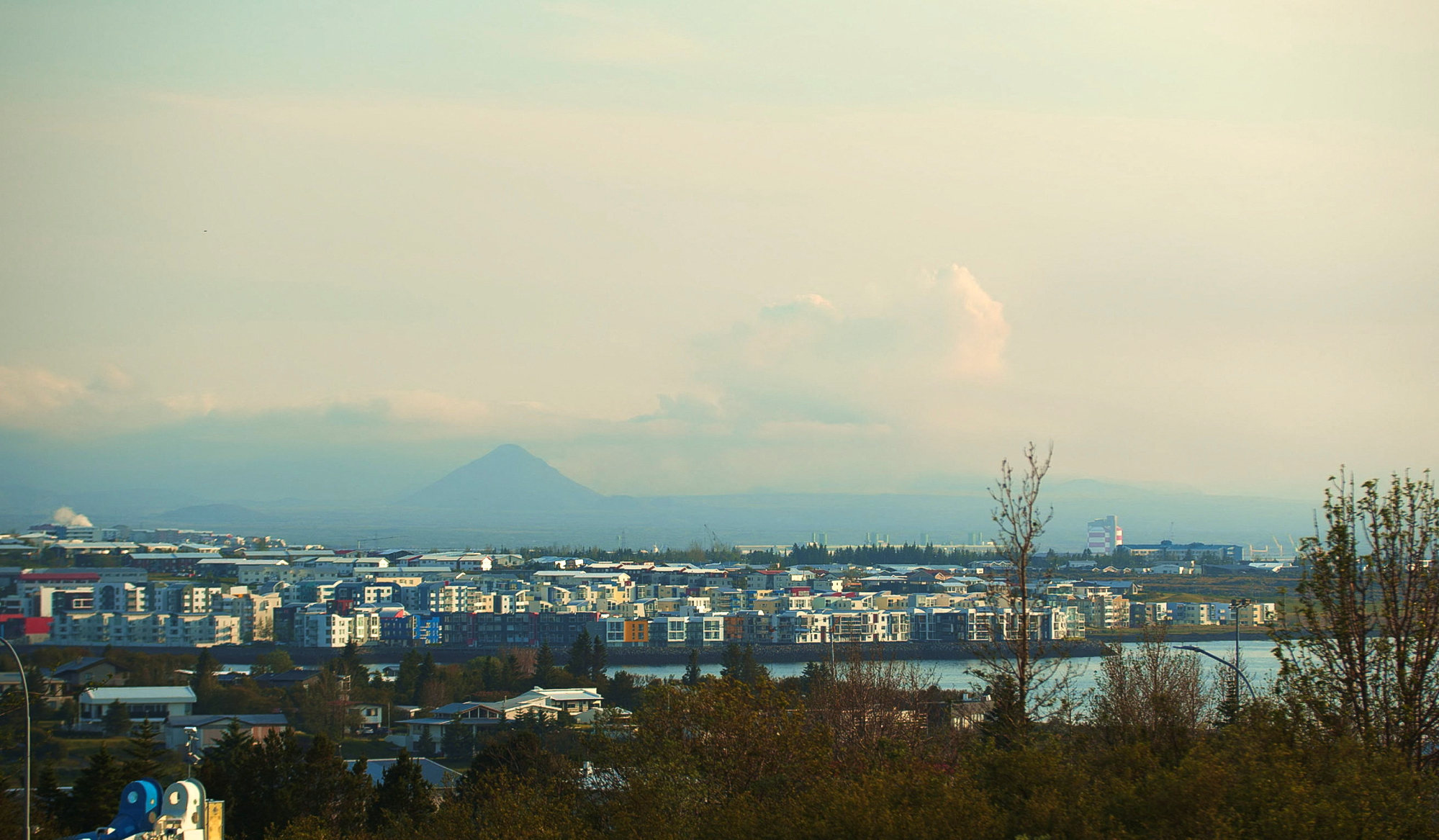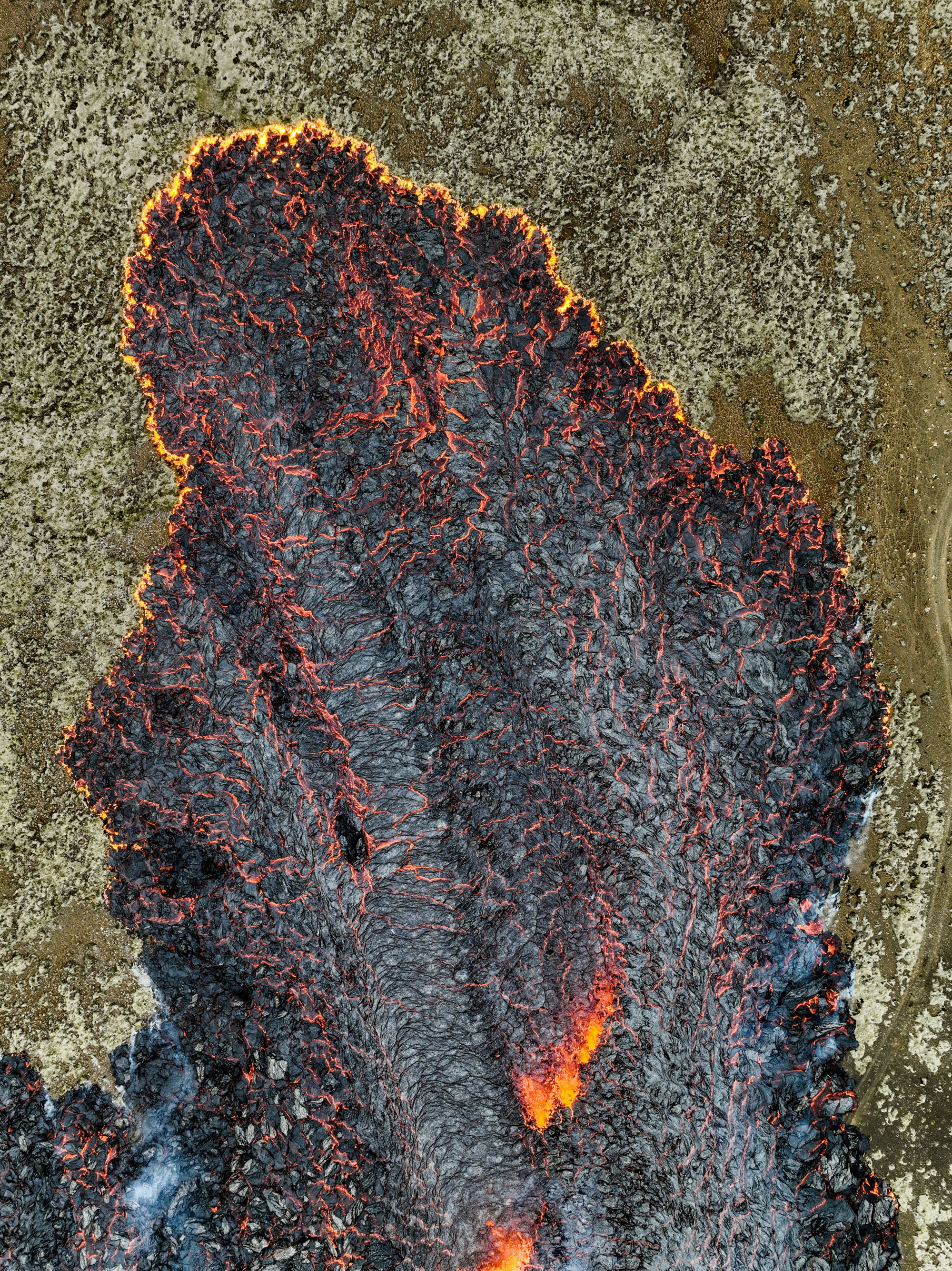
Volcano erupts near Iceland’s capital Reykjavik, gushing lava and billowing smoke
- The eruption is in an uninhabited valley near the Litli-Hrutur mountain, some 30km southwest of the capital, Reykjavik
- Iceland, which sits above a volcanic hotspot in the North Atlantic, averages an eruption every four to five years
Local media footage shows a massive cloud of smoke rising from the ground as well as a substantial flow of lava at the site around 30km (19 miles) from Reykjavik.
According to an Agence France-Presse reporter, the smoke can be seen from the road connecting the capital to the international airport, with cars pulled over and people taking pictures.
“The eruption is taking place in a small depression just north of Litli Hrutur (‘Little Ram’ in Icelandic) from which smoke is escaping in a northwesterly direction,” the meteorological office said.

“There are three fissures with lava basically running in all directions,” Thorvaldur Thordarson, Professor in Volcanology at University of Iceland, told Agence France-Presse.
He said the fissures are in total around 200 to 300 metres long and “it is a low intensity, effusive eruption”.
Thousands evacuated in Philippines as volcano spews rocks, toxic gases, ash
This means “it’s not causing widespread threats due to explosive activity” but “if the eruption continues for long enough it could be a threat to infrastructure”.
Thousands of small earthquakes were recorded in the area in the week leading up to the eruption, signalling that the magma below the ground was moving and an eruption was imminent.
The Icelandic authorities advised against going to the site, located in difficult terrain without road connection, before they have assessed the situation.
The magma broke through the ground just a few kilometres from two previous eruptions in the past two years.
The first was on March 19, 2021 in the Geldingadalur valley and lasted six months, while the second occurred on August 3, 2022 in the Meradalir valley, lasting three weeks.
Before the 2021 eruption, the region had remained dormant for eight centuries, but vulcanologists believe the new cycle of increased activity could last several years.

The effusive eruptions that have occurred in this area so far have not been very dangerous, nor have they had any impact on air traffic.
The 2021 and 2022 eruptions attracted hundreds of thousands of visitors hoping to catch a rare glimpse of an active volcano.
Thordarson said the eruption could last anywhere from “a few days” to more than half a year like in 2021, or even longer.
Indonesia’s Merapi volcano spews hot ash clouds in new eruption
The North Atlantic island straddles the mid-Atlantic Ridge, a crack in the ocean floor separating the Eurasian and North American tectonic plates.
In April 2010, some 100,000 flights were cancelled, leaving more than 10 million travellers stranded, following the massive eruption of the Eyjafjallajokull volcano.
Other volcanoes, such as Askja in the uninhabited highlands of central Iceland, have recently shown signs of activity.
One of the country’s most dangerous volcanoes is Katla, near the south coast. It last erupted in 1918, with an unusually long pause suggesting an imminent reawakening.
The 1783 eruption of the Laki volcanic fissure in the south of the island is considered by some experts to be the most devastating in Iceland’s history, causing its biggest environmental and socio-economic catastrophe.
Between 50 to 80 per cent of Iceland’s livestock was killed, leading to a famine that left a quarter of the country’s population dead.
The meteorological impact of the eruption also had repercussions for several years, with some experts suggesting it may have played a part in triggering the French Revolution.

.png?itok=arIb17P0)